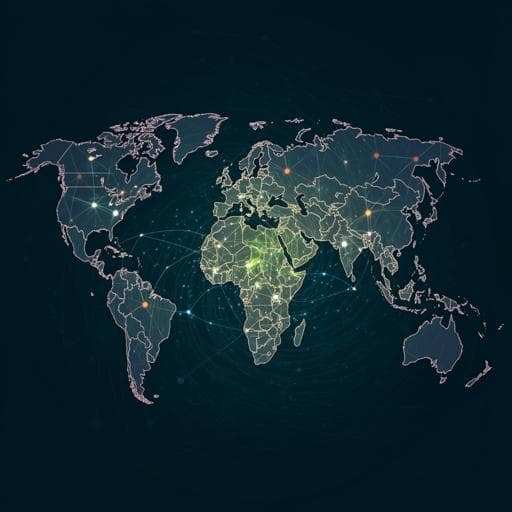
Education
Uncovering Covid-19, distance learning, and educational inequality in rural areas of Pakistan and China: a situational analysis method
S. Zamir and Z. Wang
This research, conducted by Samina Zamir and Zhencun Wang, delves into how the Covid-19 pandemic reshaped education in rural Pakistan and China. It uncovers the hurdles of distance learning amid technological and resource inequalities, revealing a pressing need for policy action.
~3 min • Beginner • English
Introduction
The paper examines how the Covid-19 pandemic disrupted education and accelerated the shift from face-to-face to online learning, highlighting risks for rural students due to limited infrastructure, devices, electricity, and connectivity. It outlines government responses in Pakistan (TeleSchool TV channel, RadioSchool) and China (MoE’s postponement of reopening and nationwide emergency remote learning), noting that experiences varied by geography, school type, and socioeconomic status, potentially exacerbating existing inequalities. The study identifies gaps in comparative analyses of rural Pakistan and China regarding Covid-19, distance learning, and educational inequality, and proposes a novel application of the Situational Analysis Method (SAM). The objectives are: (1) investigate Covid-19 and the state of distance learning in rural Pakistan and China; (2) analyze paradoxes of internet connectivity during Covid-19 in rural areas; and (3) examine intersectionality and educational inequality in rural areas of both countries. The study’s importance lies in informing policy to improve rural education during crises and leveraging SAM to map human and nonhuman factors influencing remote learning.
Literature Review
The review synthesizes global and regional evidence on Covid-19’s educational impacts, especially in rural contexts. Key themes include: limited digital competency among rural teachers and students hindering curriculum delivery; psychosocial harms to children (anxiety, depression, domestic violence) from lockdowns; widening urban–rural divides in access to distance learning resources (TV, internet, devices) with particular disadvantages for girls; constraints in low- and middle-income countries due to connectivity and power; and mixed effectiveness of remote modalities (TV, radio, online). Evidence from Pakistan and China shows rural students’ reduced access to devices and internet, teacher shortages (especially in rural China), and disruptions that exacerbate pre-existing inequalities. Studies from other countries (Indonesia, India, South Africa, OECD contexts) corroborate challenges with infrastructure, engagement, teacher capacity, and the role of internet access in shaping educational inequality. The conceptual and theoretical framing links Covid-19 to distance learning and internet connectivity, and uses an intersectional lens (considering overlapping identities and structural factors) to understand educational inequality.
Methodology
The study employs the Situational Analysis Method (SAM), a qualitative approach that uses the situation as the unit of analysis. Data were compiled from literature, reports, government websites, and other sources providing contextual information aligned with the study objectives, supplemented by informal discussions, emails, and phone calls. SAM involves mapping internal and external environments, identifying trends, opportunities, threats, strengths, and weaknesses, and constructing relational maps (situational maps, social worlds/arena maps, and positional maps). This facilitates integrating the authors’ professional experiences, and addressing human (e.g., parents, family members, educators) and nonhuman elements (internet access, TV, radio, mobile phones, other devices) influencing the effectiveness of distance learning during Covid-19. Positional maps capture social stratification factors (gender, child labor demands, socioeconomic status) affecting remote education. The approach is presented as complementary to grounded theory by centering the broader context and relationships.
Key Findings
- Distance learning expansion: Both countries rapidly expanded distance/remote learning during Covid-19, but students, parents, and teachers lacked optimal experience and support for effective engagement. In rural China, shortages of devices (computers, smartphones) and poor connectivity were salient; in rural Pakistan, unpreparedness due to limited technological infrastructure, increased teacher workloads, privacy concerns with online tools, and study–life balance challenges were prominent.
- Participation and engagement (China, rural): A government-affiliated report (DRC, April 2021) found 11.5% of rural children did not consistently and timely participate in online learning versus 1.41% in county-level cities. Stanford REAP data indicated roughly 1 in 8 rural students (<13%) received no remote education and about 2 in 10 (<20%) had no engagement with teachers during the pandemic.
- Remote modality use (Pakistan): UNICEF rapid assessment (Aug 2020) reported parents citing printed packs/textbooks (19%), TV programs (17%), parental/caregiver support (13%), and mobile phones (11%) as most frequent modalities. Among adolescents: TV programs (30%), written materials (11%), parental/caregiver assistance (10%). Rural–urban differences included TV for learning (32% rural vs 25% urban), mobile phones (16% rural vs 24% urban), and textbooks/printed materials (10% rural vs 13% urban).
- Internet penetration and speeds: As of early 2022, China’s internet penetration was 70.9% overall, with 73.4% of users in urban and 27.6% in rural areas; Pakistan’s overall penetration was lower, but relative to population distribution there were proportionally more internet users in rural Pakistan than rural China. Median speeds (Ookla, early 2022): China—mobile 96.84 Mbps, fixed 146.62 Mbps; significant annual increases (mobile +79.9%, fixed +55.6%). Pakistan—annual increases in median speeds were smaller (mobile +26.5%; fixed +28.9%). Rural China reportedly achieved near-parity with urban areas in network coverage and speeds, while rural Pakistan experienced slower, less reliable, less consistent internet than urban areas.
- Structural barriers: Both countries’ rural education is affected by poverty, insufficient funding, and long, hazardous commutes to school. Rural China faces teacher shortages and reduced parental care for “left-behind” children due to migration; rural Pakistan faces limited opportunities for children and women, inadequate teacher training, constraining social norms, and school attacks by extremist groups.
- Market constraints: In both countries, low rural population density and limited potential customers reduce incentives for ISPs to invest, contributing to poor rural connectivity.
Discussion
The findings address the research questions by demonstrating that Covid-19 catalyzed widespread remote learning while simultaneously magnifying pre-existing rural–urban disparities in access, infrastructure, and capacity in Pakistan and China. The paradox of internet connectivity—where penetration may expand but quality and consistency remain uneven—directly affects remote learning participation and outcomes, especially in rural settings. Intersectional factors (gender, socioeconomic status, geography, parental migration) compound educational inequality, limiting effectiveness of distance learning and potentially impacting long-term human capital development. The cross-country comparison shows common structural constraints (poverty, funding gaps, rural remoteness) but also country-specific challenges (device access and teacher shortages in rural China; unpreparedness, workload, safety, and gendered social norms in rural Pakistan). These insights underscore the need for targeted, context-sensitive policies that integrate infrastructure investment, digital inclusion, teacher support, and protection for vulnerable groups to make emergency remote learning equitable and effective.
Conclusion
The study concludes that Covid-19 expanded remote learning in rural Pakistan and China but exposed and intensified inequalities tied to internet access, device availability, teacher capacity, and social conditions. China’s rural areas struggled with device shortages and connectivity, with a measurable share of students receiving no remote education or teacher interaction. Pakistan’s rural areas faced infrastructural unpreparedness, higher teacher workloads, privacy concerns about online tools, and difficulty maintaining study–life balance. Internet penetration and use patterns differed by country and rural–urban context; China achieved higher and more uniform speeds, while rural Pakistan lagged in reliability and performance. Educational inequality in both countries is linked to poverty, underfunding, and long travel distances; rural China is additionally affected by parental migration and teacher shortages, and rural Pakistan by gendered norms, inadequate teacher training, and security threats. Policy recommendations include orienting students, parents, and teachers for remote learning; provisioning devices and connectivity (including satellite or mobile solutions) in rural areas; incentivizing ISP investments (e.g., tax relief, supervision, universal service mechanisms); bolstering rural education funding, school infrastructure, and qualified staffing; providing teacher incentives and professional development; and expanding targeted scholarships and awareness programs for girls. Future research can deepen understanding of learner and parent perspectives and disentangle complex rural–urban contextual dynamics.
Limitations
The study did not directly and systematically assess students’ and parents’ perceptions; their perspectives are underrepresented. Emphasis on rural–urban differences limits exploration of complex contextual nuances within and between settings. Data are drawn from secondary sources and informal communications; detailed datasets are not publicly available due to privacy concerns, and much information is summarized rather than provided as raw data.
Related Publications
Explore these studies to deepen your understanding of the subject.







